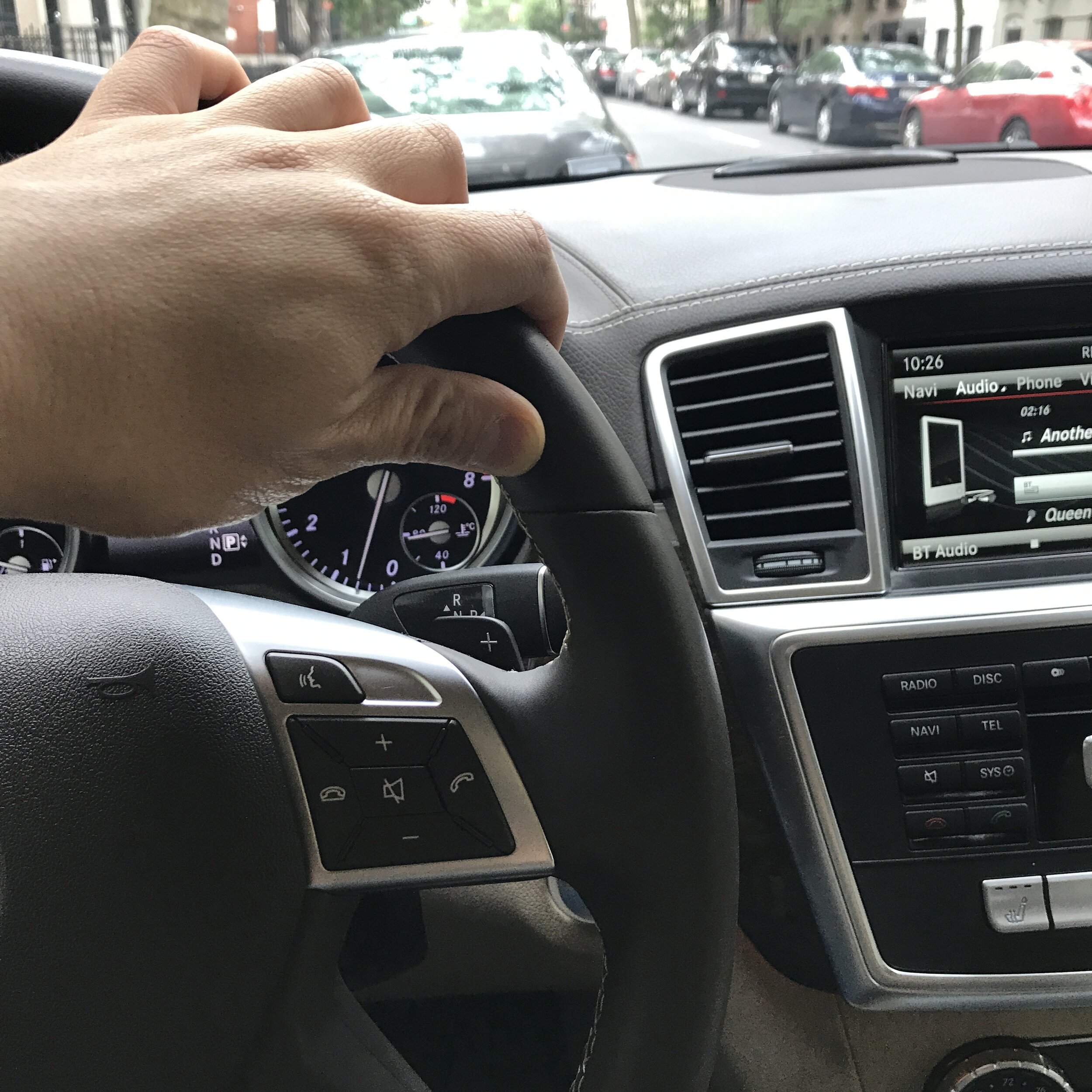"You can’t call yourself a true petrolhead until you’ve owned an Alfa Romeo," proclaimed the high priest of octane himself, Saint Jeremy Clarkson. And like countless enthusiasts before me, I found myself drawn to his gospel. For more than six months, I’ve been obsessing over the idea of owning one. After all, when in Switzerland, why not seek out the forbidden fruit — those elusive Alfas never sold in the United States? But where does one begin?
Naturally, the first step is figuring out which model to pursue. If money were no object, my ultimate prize would be the Alfa Romeo Tipo 33 Stradale — a mid-engine, rear-wheel-drive sports car paired with a six-speed manual. What’s astonishing about the Tipo 33 is that it houses a tiny two-liter V8! Truly remarkable. A limited-production masterpiece, it’s arguably the ultimate Alfa Romeo. But, sadly, I don’t have all the money in the world to get one. And even if I do, it’s not like one is conveniently up for auction. As such, my search must remain grounded.
That said, I also wanted a special example of a large production Alfa Romeo. In other words, I didn’t want to settle for an Alfa that was common during its production run. On top of that, I only wanted to get one Alfa Romeo. Therefore, whatever I selected must be representative of everything desirable about an Alfa Romeo from both an aesthetic and driving experience perspective.
The criteria? As a proper petrolhead, it must be a manual transmission. That immediately eliminates the Alfa Romeo 4C and 8C. Next, it must be rear-wheel drive, which sadly rules out most of Alfa Romeo’s Fiat-era lineup. And last, it must have a Busso V6 because Saint Clarkson said it is one of the top three best engines ever made. To get one’s representative Alfa Romeo just to prove one’s worth, as a petrolhead, and not get a Busso V6 is a wasted opportunity.
Fortunately, Alfa Romeo did offer models configured with all three criteria.
That brings me to the Alfa Romeo 75, 90, and GTV-6 — all manual, rear-wheel-drive sports sedans powered by the legendary Busso V6. Yet, despite their credentials, none had a truly special edition featuring that engine. The 75 Turbo Evoluzione came close, but instead of the Busso V6, it had a turbocharged 1.8L inline-four, built for racing. Basically, it suffers from the same inline 6 vs turbo charged inline four dilemma as the E30 BMW and the W201 Mercedes Benz. It also didn’t help that the 75, 90, and GTV-6 were not forbidden fruit either — having been sold in the US during their production run. Plus I never particularly liked the way the boxy Alfa 75 and 90 looked. And as controversial as this will sound, I always disliked the rear design of the GTV-6. Unfortunately, I am not continental enough to appreciate the Giorgetto Giugiaro design.
At this point, I had to face a tough reality: I had to compromise. As Meat Loaf famously sang, two out of three ain’t bad. But what would I sacrifice — manual transmission, rear-wheel drive, or the Busso V6?
One thing was clear — I wouldn’t budge on the manual transmission. In this era of dual clutch and electric automation, manual transmissions are gold and a reminder of better motoring times. That left me with two options: accepting front-wheel drive or settling for another engine. Many front-wheel-drive Alfas had the Busso V6, but I’ve never been able to warm up to under-steering. And while the Alfa Romeo Brera is a tempting choice — being an all-wheel drive vehicle and one of the most beautiful hatchbacks ever made — its GM-sourced V6 seems uninspiring. What is most sad about these Fiat era Alfas is that many of them were truly beautiful and had the Busso V6. But they were all ruined by their front-wheel drive drive train layout. What a crying shame!
Then there is the Alfa Romeo 155 Q4. Essentially, it is a present day cut price Lancia Delta Integrale. I mean, what’s not to like about it? Well, maybe it’s because it’s not a Lancia Delta Integrale. That’s why! Plus, the Integrale, which is a hothatch, looks much better than the 155 Q4, which only came as a compact sedan.
I could go further back in time. The 2000 GTV Bertone from the 1970s was a manual, rear-wheel-drive gem, but its four-cylinder engine just didn’t have the soul of a Busso. Alternatively, I could return back to the present with the Euro-spec Giulia Quadrifoglio. Unlike the U.S. version, it was offered as a manual. And of course, all Giulia Quadrifoglio are rear wheel drive sports sedan that comes with a Ferrari-derived V6. On paper, the Giulia Quadrifoglio seems like a promising candidate. However, Clarkson never declared that 2.9L V6 as one of the greats. And since this is a modern era Alfa Romeo — as a model — it doesn’t hold the same significance as legendary Alfa Romeos of the past. That said, what exactly is a legendary Alfa Romeo?
Well, there was the Zagato SZ (and the RZ roadster version). The Zagato was a special limited production sports car with a Busso V6, manual transmission, and rear wheel drive. On paper, it certainly checks off all the boxes for a legendary Alfa Romeo. However, I never liked the Zagato’s exterior design and its unusable boot. The Zagato was so ugly, the Italians called it “il Mostro” (the monster). On top of that, the body of the car was made of fiberglass acrylic resin, which I dislike.
My search was impossible. I even considered getting a right hand drive Hawk Stratos kit car with a Busso V6. Unfortunately, a real Lancia Stratos came with a Dino V6, which seems a whole lot cooler — even if Saint Clarkson never praised the Dino V6 as one of the top three engines ever made.
So, where does that leave me? A conclusion. After much deliberation, I’ve arrived at a controversial realization: owning an Alfa Romeo isn’t a prerequisite for being a petrolhead. Alfa Romeo has never truly made a great large production car that checks off all the boxes. There, I said it! And if people believe otherwise, it’s only because Saint Jeremy’s passion became automotive dogma. But to his credit, he does own the Alfa that is closest to meeting all the criteria — the GTV-6.
Which led me to a deeper question — did Top Gear and The Grand Tour single-handedly keep Alfa Romeo in business for the last twenty years? It’s suspicious that Alfa’s sales peaked in 2017-2018, coinciding with Clarkson’s glowing reviews, only to decline in 2019 when the show pivoted to long-format specials that no longer regularly promoted Alfa Romeos in shorter segments. It seems possible, since I am a true petrolhead and there isn’t a single Alfa Romeo I want. It is not like I didn’t tried.
And if that is the case, could this also be why Jaguar and Maserati both survived for as long as they did? I mean, was it a coincidence that both Jaguar and Maserati saw their sales peak in 2017-2018.
I wonder how many Jaguars were sold because of Clarkson, May, and Hammond caddishly saying “it’s a Jaaaag”? Moreover, I wonder how many Maseratis were sold from the three of them gushing over the complex mechanical harmony of the Quattroporte’s V8?
Personally, I would never buy a Maserati, after how Ferrari kneecapped them with the California. As the expression goes, Ferrari did Maserati dirty. And it’s not like I want to buy a classic Maserati either. As for Jaguar, besides the XJR I once had decades ago, which was pretty special at the time, I will never get another one, given how wayward the brand has become. And even with the XJR, I would never get one again. On top of that, it’s not like I want to buy a classic Jaguar either — not even the E-Type.
Except for my indifference towards the E-Type, I think most petrolheads probably share my feelings too, to some extent. I mean, if they didn’t share my feelings, I think that Alfa Romeo, Maserati, and Jaguar would not be in their current financial predicament. I mean, there are even rumors that Stellantis, as a result of the Trump Tariffs, are considering selling Alfa Romeo to the Chinese.
In any event, if what I am suggesting is true, it means that the only reason Alfa Romeo, Maserati, and Jaguar survived as long as they did is because of Jeremy Clarkson’s regular on air support for the brands. If that is the case, perhaps Stellantis and Jaguar Land Rover should retain Saint Clarkson’s services to revive Alfa Romeo, Maserati, and Jaguar! At the very least, there will be beautifully sculpted six speed manual offerings with proper petrol engines!



